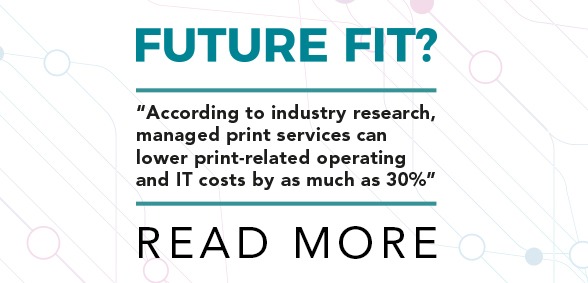
The NHS is getting serious about technology. There are a number of tech Initiatives already underway – and more about to hit. What do GP practices really need, and how ready are they to embrace tech, and all the benefits it can bring? What’s getting in their way? We decided to find out.
In conjunction with our partner, business technology solutions’ provider Brother UK, Practice Business consulted practice managers, and other healthcare providers, to identify what the real barriers to change in general practice are because, if the sector can understand these, it can find solutions to overcome them. In this, the fourth in a series of six reports, we look at some of the key things you told us about benefits, barriers and hopes for the future
Brother UK and Practice Business, in partnership, investigated the barriers to the effective implementation of technology in general practice. We reviewed and analysed the existing literature on the subject and built on this by conducting a reader survey of 135 practice managers and other healthcare practitioners, alongside a number of in-depth interviews.
Patients and practices – the tech benefits
In general, technology is seen by survey respondents as beneficial for both practice and patients – particularly when it comes to delivering a more efficient service. When asked, ‘What are the greatest benefits to the practice?’ respondents cited increased efficiencies (81.36%), reduced administrative workload (79.66%), time saved (74.58%) and improved patient experience (66.10%).
When focusing their responses on benefits to patients, respondents said that technology made their services more convenient or efficient (86.44%) and provided more connected care (76.27%), better access to care (69.49%) and better health outcomes (44.07%).
One respondent added that technology had the potential to improve communication with patients and commented on its powerful impact on the important issue of patient engagement: ‘Engaging with patients through their own media systems means they are better informed and, therefore, feel listened to and valued. They are more likely to engage with health services.’
Clearly, respondents believe that better practice processes can be achieved through innovative and effective technology, and can help to deliver a more efficient and satisfying experience for patients. Furthermore, as technology removes traditional barriers to care, especially in terms of communication and information-sharing, patients will benefit from more connected care and improved access to care.
That technology is capable of positively disrupting current activity and ways of working is clear from these responses – although it is important to note the caution voiced by some practice managers, one of whom was of the opinion that technology can only serve to enhance existing processes and practice operations. In the blog post Technology in general practice: a vehicle for change?, published by Nuffield Trust in 2016, Stephanie Kumpunen and Sophie Castle-Clarke set out how technology could aid the transformation of general practice, and allude to some of these points. However, they also note that there are barriers which practices need to consider – infrastructure, compatible systems, change in culture, patient reluctance and, of course, funding.
Identifying the barriers
Why, then, are digital practices and technology not being fully embraced in order to realise these efficiencies which practice staff themselves are quick to identify? As noted in The King’s Fund’s Digital change in health and social care (2018), barriers exist, and these are holding care providers back. In the general practice setting, according to our survey respondents, these include funding (86.44%) and human resources (61.02%) – both of which require greater investment in the health sector. Lack of knowledge about new technology (57.63%) was also high on respondents’ list of barriers.
If GP practices are to deliver agile and connected care, and share insights and information with other providers, then barriers such as these must be considered and broken down.
Future investments
Turning to the solutions which GP practices are planning to introduce there seems to be a push towards delivering convenience for patients – an answer to growing patient demand and expectations, and one which would also save time for practice staff. Just over a third (37.04%) of respondents said that they would like to see enhanced systems to support online consultations; this would deliver better access to care for patients and also free up consultation time.
Mobile devices (33.33%) were also identified as a technology that respondents were considering introducing, suggesting a step towards a paperless practice where communications can be sent in the tap of a screen. This echoes the earlier comment of one respondent on the importance of, ‘Engaging with patients through their own media systems…’
The use of mobile devices, such as tablets, is now becoming commonplace in wifi-enabled practices and supports new, more flexible ways of working; practice staff are not restricted to working in one space, at one computer, connected to just one printer, but can work in transit – or even beyond the confines of the practice.
A significant number of respondents (29.63%) said they were looking to introduce patient management solutions, suggesting a focus on streamlining patient management and care, while 27.78% said that they were intending to improve their online solutions – again, seeking to improve patient access and reduce the administrative workload in terms of appointments, access to patient records and repeat prescriptions, as well as general enquiries.
Scanning and document management solutions (25.93%) were also on the agenda for more than a quarter of practices, further suggesting a willingness to embrace the digital-first/paper-lite practice.
You can read the full report HERE
Or contact the Practice Business team or our partner Brother to share your views.
Up next: Part 5 – WHAT NEXT? TECH-LED SOLUTIONS

Be the first to comment